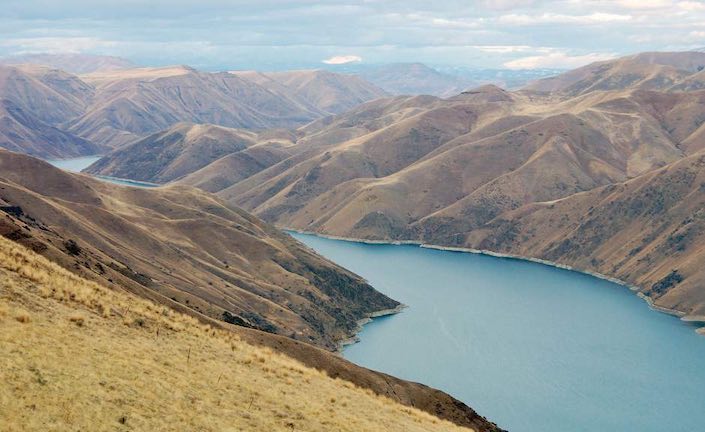forum
library
tutorial
contact

Brownlee Didn't Take Typical Dive
by Jayson JacobyBaker City Herald, April 5, 2019
|
the film forum library tutorial contact |

|
Brownlee Didn't Take Typical Diveby Jayson JacobyBaker City Herald, April 5, 2019 |
"The Columbia has less snowpack than the Snake, so the (flood control) targets aren't as deep as we've seen in past years"
 The relationship between snowpack and the water level at Brownlee Reservoir might seem backward.
The relationship between snowpack and the water level at Brownlee Reservoir might seem backward.
Except this spring it's not.
Here's the backward part: When the snow is deep and the spring runoff above average, Brownlee tends to shrink.
The reason is flood control.
Because the federal government helped pay to build Brownlee Dam in the late 1950s, Idaho Power Company, the Boise utility that owns the dam, must comply with mandates from the Army Corps of Engineers intended to reduce the risk of flooding on the Columbia River in the Portland area.
When hydrologists predict plentiful runoff into Brownlee due to a dense snowpack, the Corps of Engineers usually requires Idaho Power to lower the level at Brownlee so the reservoir can hold back some of that water rather than let it flow down the Snake River and, eventually, to the Columbia.
There's quite a lot of snow this spring in the Idaho mountains upstream from Brownlee.
The water content in the snowpack in the Boise and Payette river basins, for instance, is about 30 percent above average.
That's similar to the snowpack in early April of 2017.
That year the Corps of Engineers ordered Idaho Power to severely lower Brownlee -- to 64 feet below full by the end of April.
The situation is quite different today, despite the snowpack similarity.
Brownlee is 23 feet below full, and the water level is rising, not falling, as was the case at this time a year ago.
The Corps of Engineers has set a target for April 15 to have Brownlee about 16 feet below full, said John Hildreth, senior engineer for Idaho Power.
The tentative target for April 30 is 9 feet below full -- or 55 feet higher than the same day two years ago.
Hildreth acknowledges that it's unusual for the Corps of Engineers flood control requirements to be this lenient when the Idaho snowpack is well above average.
The explanation is straightforward.
The storms in February and early March that bolstered the snowpack in Idaho (and in Northeastern Oregon) mainly missed the northern half of Washington and British Columbia.
Those upper reaches of the Columbia River basin, above Grand Coulee Dam, have an outsized influence on flood control requirements on the lower Columbia, Hildreth said. That's because the Snake, major river that it is, ranks well behind the mighty Columbia in volume.
"The Columbia has less snowpack than the Snake, so the (flood control) targets aren't as deep as we've seen in past years," Hildreth said.
learn more on topics covered in the film
see the video
read the script
learn the songs
discussion forum
